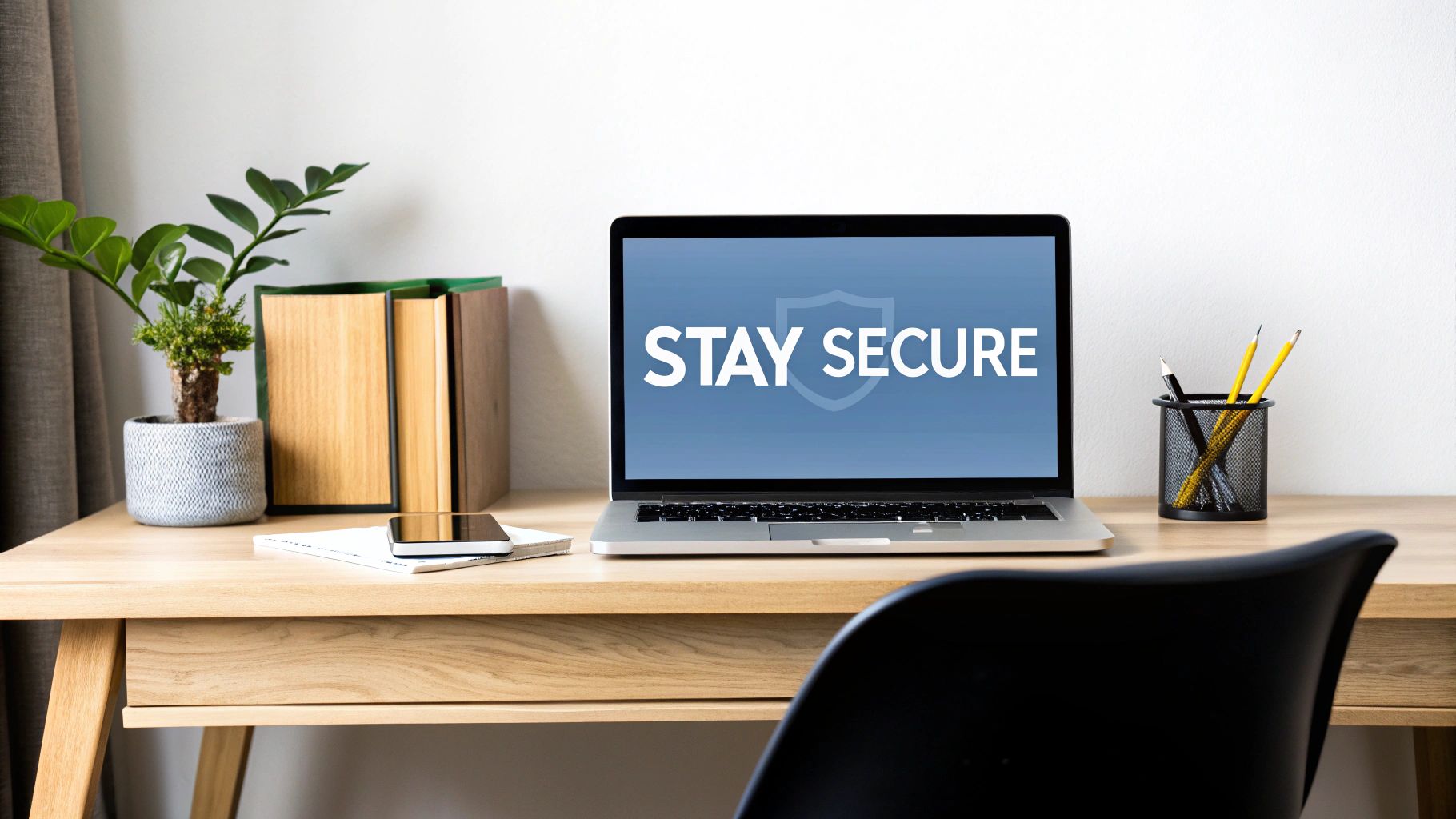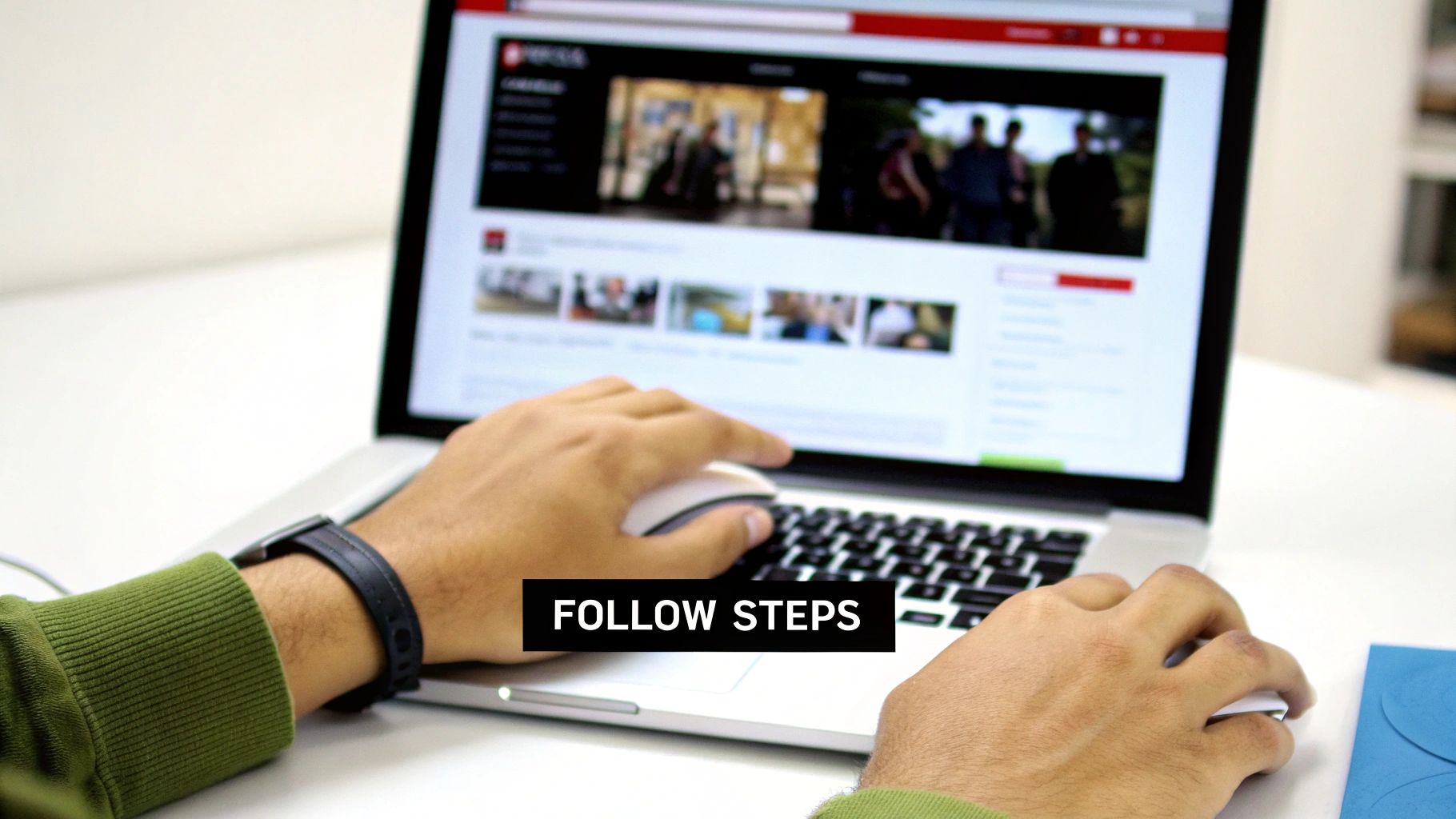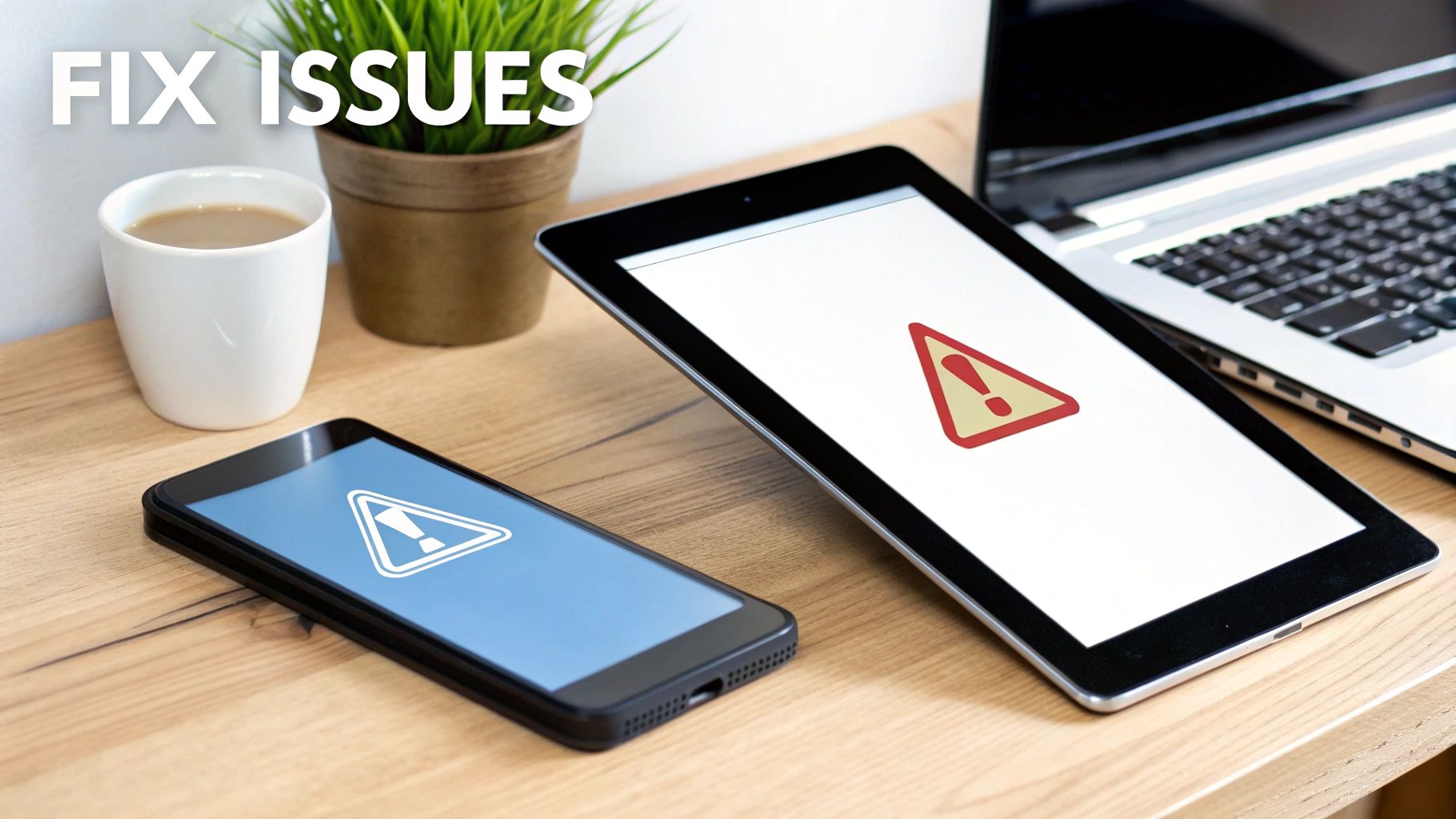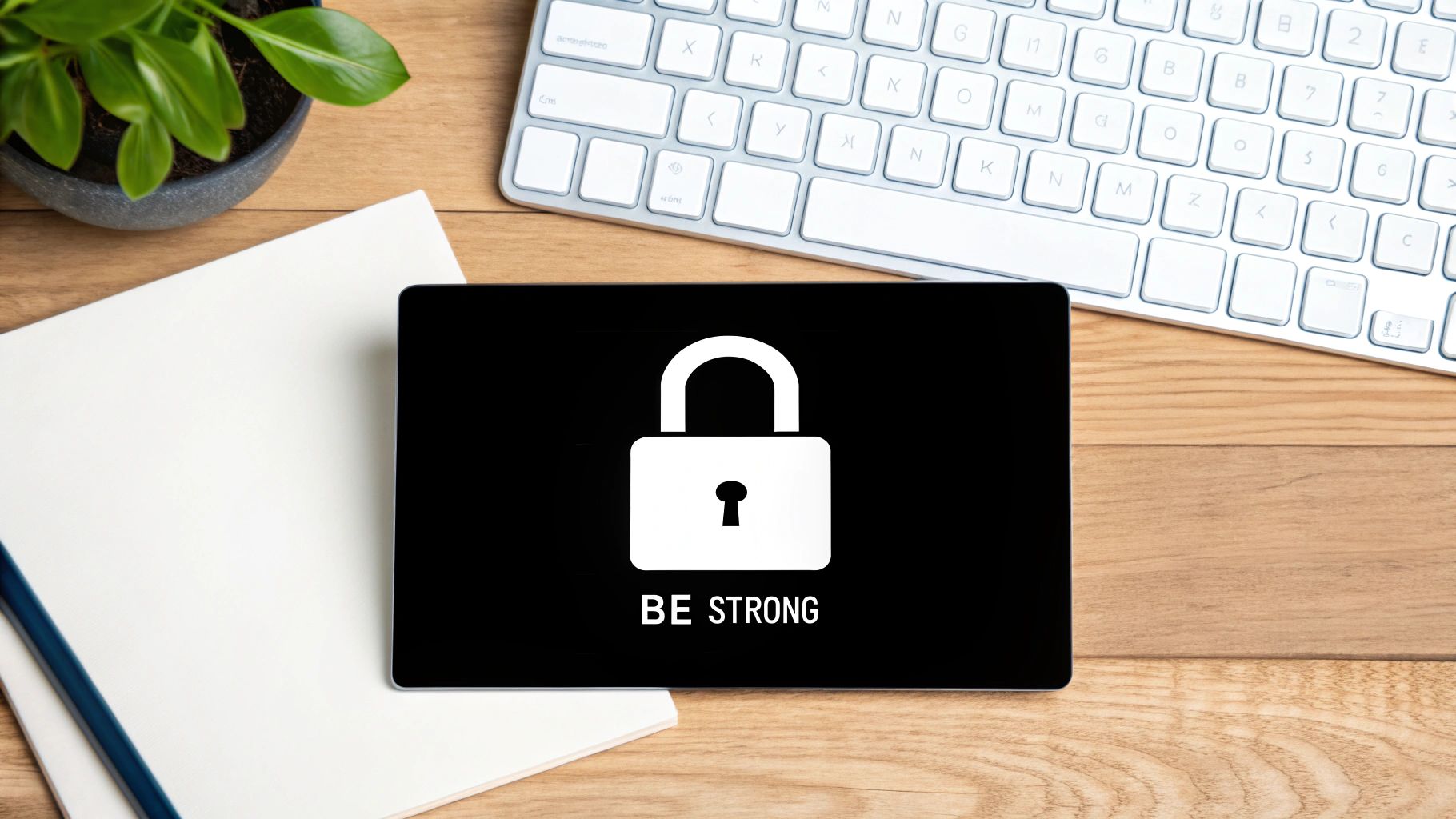
How to Change My Netflix Password: The Ultimate Safety Guide
Share
Why Changing My Netflix Password Regularly Matters
Changing your Netflix password isn't just a routine security task; it's a vital step in protecting yourself from online threats. Think of it like changing the locks on your door – a simple action that significantly boosts your home's security. This proactive measure protects not only your viewing history and preferences but also your sensitive payment information, a prime target for cybercriminals. Regularly updating your password adds an extra layer of security around this data.
Furthermore, frequent password changes interact with Netflix's own security systems to strengthen your account protection. These systems constantly monitor for suspicious activity, working in conjunction with your password updates to create a more robust defense. For instance, if unusual login attempts are detected from a new location, a recently changed password can help block unauthorized access. You might be interested in: Our sitemap for more related articles
Proactive Security: Netflix's Role
Netflix also plays a role in password changes through its own security measures. The company actively monitors large-scale password breaches and automatically resets passwords if they detect matches in compromised databases. This proactive approach not only increases user security but also encourages regular password updates for better account protection. Learn more about Netflix's proactive security measures. This highlights Netflix's commitment to user safety and emphasizes the importance of password management.
The Recommended Frequency and Warning Signs
How often should you change your Netflix password? Security experts generally advise updating passwords every 90 days. However, some warning signs may indicate a need for a more immediate change. These include:
- Unfamiliar Device Logins: Seeing logins from devices you don't recognize.
- Suspicious Viewing Activity: Finding shows or movies in your "Continue Watching" list that you haven't viewed.
- Account Access Issues: Experiencing difficulty logging in, particularly if you also receive unexpected password reset emails.
These are red flags that should prompt an immediate password change to prevent unauthorized access.
Integrating Password Changes Into Your Broader Digital Security Strategy
Changing your Netflix password is just one element of a comprehensive digital security strategy. It should be part of a larger plan that includes creating strong, unique passwords for all your online accounts. Enabling two-factor authentication whenever possible is also crucial, as is staying vigilant against phishing scams. By combining these practices, you create a strong security net that safeguards your digital life across various platforms. Much like you wouldn't use the same key for your house and car, using unique passwords for each online account is essential for maximum security.

Change My Netflix Password: Device-Specific Methods
Changing your Netflix password doesn't have to be a headache, even across multiple devices. This guide provides simple steps for updating your password on various platforms, incorporating helpful tips from seasoned Netflix users. Understanding these device-specific instructions will ensure a smooth, secure process.
Changing Your Netflix Password on a Computer
Updating your Netflix password on a computer is easy. First, open your web browser and go to the Netflix website. Once logged in, click your profile icon in the top right corner. Select "Account" from the dropdown menu. Under "Membership & Billing," find and click "Change password". Enter your current and new passwords, then select "Save." This simple process quickly updates your login details.
Changing Your Netflix Password on a Mobile Device
The process for mobile devices is slightly different. A key tip: change your password within the Netflix app settings, not your phone's general account settings. Open the Netflix app and tap on your profile icon. Scroll down and tap "Account." This opens a webpage within the app. Select "Change password," enter your current and new passwords, and tap "Save." Using the in-app method is crucial for correctly updating your Netflix credentials.
Changing Your Netflix Password on a Smart TV
Smart TVs can be tricky due to their diverse interfaces. Generally, start by navigating to the Netflix app settings. Look for options like "Account," "Membership," or a gear icon. Each smart TV brand might place these settings in different spots. You should find the "Change password" option within these settings. If you have trouble, check your specific smart TV's user manual or contact Netflix support.
Managing Simultaneous Device Updates
After a password change, you'll likely need to re-login on other devices. An efficient way to handle this is by logging out of all devices from your account settings on a computer. This lets you selectively log back in with your new password only on the devices you intend to use. This proactive step enhances security by preventing unauthorized access from previously logged-in devices.
To illustrate the different processes, the following table summarizes the password change steps across various device types. It highlights key differences and similarities in navigation and estimated time.
| Device Type | Navigation Path | Special Considerations | Estimated Time |
|---|---|---|---|
| Computer | Profile Icon > Account > Change password | Straightforward process | 1-2 minutes |
| Mobile Device | Profile Icon > Account (webpage) > Change password | Use in-app settings, not phone settings | 2-3 minutes |
| Smart TV | Netflix App Settings (varies by TV) > Change password | Menu location may vary, consult manual | 3-5 minutes |
Key takeaway: while the specific steps may vary, accessing your account settings is the common thread across all devices.

By following these device-specific instructions, you can maintain a secure Netflix account and enjoy uninterrupted viewing. Remember, regularly updating your password, along with other security best practices, is essential for protecting your online accounts.
Navigating Netflix's Password Sharing Landscape
The world of streaming is constantly changing, and with it, so are the rules around password sharing on platforms like Netflix. Understanding these changes is vital for protecting your account, managing your subscription, and ensuring uninterrupted access to your favorite shows. It's about knowing how Netflix identifies multi-household usage and what sharing arrangements are still permitted. It also means adapting your password habits to fit these new guidelines.
How Netflix Detects Multi-Household Usage
Netflix primarily uses a combination of IP addresses, device IDs, and account activity to detect when an account is being shared outside of a single household. Think of it like a digital fingerprint for your viewing habits. These data points build a profile of your typical usage. When Netflix detects logins from vastly different locations or a large number of devices simultaneously, it raises a red flag. For example, if your account typically streams from your home in London, but suddenly shows activity from Madrid and Rome on several different devices, Netflix might suspect sharing outside your household.
Permitted Sharing Arrangements and Regional Variations
Netflix's current policy generally allows account sharing within a single household. This means people living at the same address can still access the account from different devices. However, the specifics and enforcement of this policy can vary depending on your region. Some areas have stricter rules than others, making it essential to check Netflix’s policy for your specific location. Some countries offer options like adding "extra member" slots to your subscription for a fee, which allows sharing outside your primary household while remaining within the terms of service.
Historically, Netflix's stance on password sharing has changed significantly. Initially, the platform was more lenient, permitting sharing within households without stringent oversight. However, as subscriber growth plateaued, Netflix began focusing on monetizing multi-household sharing. This shift was initially tested in Latin American markets before being implemented globally. More detailed statistics on this trend can be found here.

Financial Implications and Managing Shared Accounts
Deciding whether to adhere to Netflix's sharing policy has clear financial implications. Continuing to share your account outside the permitted guidelines could result in additional fees, or in some cases, account suspension. Transitioning shared accounts to individual subscriptions, or using the "extra member" feature where available, will mean an increase in cost. Navigating this transition requires open communication with everyone who uses the account. Consider helping those outside your household set up their own accounts and transfer their profiles and watchlists to minimize disruption. This approach allows everyone to maintain their personalized viewing experience while complying with Netflix’s terms.
Alternative Sharing Approaches Within Netflix
Even with the changing landscape, there are still secure ways to manage shared viewing within Netflix's framework. Using the profile creation feature allows different members of your household to keep their individual watchlists and recommendations organized. Changing your Netflix password remains a crucial security best practice whenever someone moves out or is no longer authorized to access the account. This reinforces the importance of actively managing your account access. Consider also using a password manager to securely store and share the updated password within your household. By adapting to these changes, you can maintain both account security and a positive viewing experience within the Netflix ecosystem.
Crafting Netflix Passwords: Security Meets Simplicity
Creating a strong password for your Netflix account doesn't require you to be a tech whiz. It's more about understanding how to create memorable yet secure passwords, combining security best practices with how we naturally remember things. This means strategically using characters in ways that make cracking attempts exponentially harder, all without needing to memorize complicated strings of characters.
The Psychology of Memorable and Secure Passwords
We often gravitate towards simple passwords because they're easy to recall. However, these are also the easiest for hackers to crack. The trick is finding a happy medium. Think of it like creating a personal secret code – something meaningful to you, but completely uncrackable to others. A great place to start is with a passphrase, which is a string of unrelated words. For example, "purple elephant singing opera" is far more secure than "Password123" and easier to remember than "pE#s0@oP*".
Building a Strong Password: Practical Techniques
While passphrases provide a solid foundation, adding complexity makes them even stronger. Incorporating numbers, symbols, and capitalization in unexpected places can significantly boost your password's security. Instead of "purple elephant singing opera," try "Purple3lephant!Singing0p3ra?". This version keeps the memorable passphrase format while adding layers of complexity that dramatically improve its resistance to cracking. Learn more in our article about how to master account security.
Password Managers: Pros and Cons for Streaming Services
Password managers like 1Password or LastPass can simplify the task of remembering complex passwords. They store all your logins securely, so you only need to remember one master password. While convenient, there are some factors to consider. If your master password is compromised, all your accounts become vulnerable. Also, the quality of password managers varies. Look for features like two-factor authentication, strong encryption, and a proven security record when selecting a password manager. These features are essential for protecting your Netflix account, and indeed any online service.
Choosing the Right Password Manager
The ideal password manager depends on your specific needs and preferences. Some prioritize user-friendliness, while others emphasize advanced security features. Think about things like device compatibility, the ability to sync across multiple platforms, and additional functions like secure note storage and password sharing with family members.
Password Strength Comparison
To illustrate the security differences between basic and complex passwords, the table below compares various password types and their resilience to common hacking methods.
Password Strength Comparison: Analysis of different password types and their resistance to common hacking methods
| Password Type | Security Level | Crack Time Estimate | Memorability Score |
|---|---|---|---|
| Password123 | Very Weak | Seconds | High |
| MyNetflixPassword | Weak | Minutes | Medium |
| P@$$wOrd! | Moderate | Hours | Low |
| Purple3lephant!Singing0p3ra? | Strong | Years | Medium |
Regularly updating your Netflix password and using a unique, strong password are fundamental steps in online security. By understanding the principles of password creation and using tools like password managers, you can significantly enhance your account protection. Balancing security with ease of recall is the key to effectively managing your Netflix password and safeguarding your online activity.

When To Change My Netflix Password In Shared Accounts
Sharing your Netflix password can be tricky. You want to be generous, but you also need to protect your account and personal information. Knowing when to change your password is crucial, especially during life changes like a roommate moving out, the end of a relationship, or if you suspect something's not right with your account.
Life Transitions And Password Updates
Life transitions often mean changes to who should have access to your Netflix. A roommate moving out? Time for a new password. Relationship changes also often call for a fresh start with online accounts. This not only protects your information but also establishes healthy boundaries. Seeing unfamiliar shows in your "Continue Watching" list is another red flag that warrants an immediate password change.
Communicating Password Changes
When you update your password, let everyone who legitimately uses the account know. Give them the new password securely. Open communication avoids confusion and frustration. But be smart about how you share the new password. Avoid email or unencrypted messages, which can be intercepted. A secure password manager is a much safer option.
Strategic Timing And Unauthorized Access
Regular password updates are a good security practice. Consider changing your password at the start of each month or quarter. Also, keep an eye on your viewing history. Do you see multiple devices streaming from different locations simultaneously? Are there shows you didn't watch? These could be signs of unauthorized access and should trigger an immediate password change. Interestingly, many users haven't changed their sharing habits despite Netflix's crackdown. As of mid-2024, over one in three Netflix subscribers who shared with one or two other people made no changes. About 60% reported no need to change because they only shared within their household. More statistics are available here.
Netflix Profiles As A Preliminary Tool
Before changing your password, think about using Netflix profiles. Separate profiles can help manage viewing preferences and recommendations, minimizing the need for constant password changes. Each profile has personalized recommendations, watchlists, and viewing history. However, profiles don't provide the same security as a password change, so don't rely on them solely if you suspect unauthorized access.
Handling Difficult Conversations
Talking about viewing access can be uncomfortable, especially with family or friends. But these conversations are important for both security and healthy relationships. Be direct and honest about why you're changing the password, focusing on the importance of account security for everyone. Offering to help others set up their own accounts can ease the transition and make it less confrontational. Approach these situations with empathy and understanding to navigate shared accounts without added stress.
After The Change: What Happens To Your Netflix Account
Changing your Netflix password initiates a series of actions behind the scenes that impact your viewing experience. It's not just about logging you out; it affects various aspects of your account, from device access to personalized recommendations. Let's explore how Netflix manages this transition.
Device Authentication And Sign-Outs
Once your Netflix password is changed, existing device authentications are gradually revoked. This isn't instantaneous across all devices. Some, like Smart TVs or streaming sticks, might remain logged in for a short time, perhaps a few hours. However, the next time they attempt to access Netflix content, they'll be prompted for the new password. Mobile devices and computers tend to be logged out more quickly, often within minutes.
This staggered logout process minimizes viewing disruptions for legitimate users while bolstering security. Imagine having your movie suddenly interrupted mid-stream because of a password change! Netflix designed the process to avoid this frustrating scenario. You can also proactively manage device sign-outs. Logging out of all devices from your account settings on a computer after changing your password provides a more immediate security boost.
Profile Persistence And Recommendations
Your profile information remains untouched after a password change. This includes your viewing history, watchlist, and personalized recommendations. Think of your profile as distinct from your login credentials. The password protects access to the account, while your profile stores your individual viewing data. This means you can change your Netflix password frequently without losing your curated "My List."
While your viewing history remains, the password change can subtly influence recommendations over time. If the change resulted from unauthorized access, and the unauthorized user had different viewing preferences, the recommendations might shift slightly as your own viewing habits reassert themselves. Netflix's recommendation algorithm constantly adapts to your viewing patterns.
Payment Processing And Content Downloads
Changing your Netflix password doesn't affect your current payment method. Your subscription remains active, and billing continues uninterrupted. It's like updating your email address – it changes a contact detail, not the underlying financial agreement. This ensures continuous service while maintaining account security.
Similarly, downloaded content remains available on your devices, even after a password change. Continue watching downloaded shows and movies offline without re-downloading. However, if you remove downloaded content and want to download it again, you'll need to enter your new password on that device.
Managing Device Sign-Outs For Enhanced Security
Netflix's device sign-out management strategy balances security with user convenience. The gradual logout process prevents unauthorized access while minimizing disruptions for legitimate viewers. For those prioritizing immediate security, the option to manually log out of all devices provides greater control and a faster security response. This approach allows users to choose the security level that best suits their individual needs.
Troubleshooting: Netflix Password Change Challenges
Changing your Netflix password should be a straightforward process, but occasionally, things don't go as planned. This guide offers solutions to common password change issues, helping you regain access and keep your account secure.
Forgotten Credentials
Forgetting your password is a common occurrence. Fortunately, Netflix has a simple recovery process. On the login page, click "Need help?" or "Forgot password?". You'll be asked for the email address linked to your Netflix account. Netflix will then send a password reset link to that email. Click the link and follow the prompts to create a new, secure password. If you no longer have access to that email address, contact Netflix support for assistance. This highlights the importance of keeping your contact information current.
Email Access Problems
Sometimes, accessing the email account connected to your Netflix profile can be tricky. This can happen if you’ve switched email providers or forgotten your email password. Before changing your Netflix password, make sure you can access your linked email. If you can't access your email, try recovering it first. Most email providers offer password recovery options similar to Netflix. Once your email is accessible, proceed with the Netflix password reset. This ensures you receive the reset link without any issues.
Device Synchronization Errors
Sometimes, even after a successful password change, some devices might not update correctly. This can cause login problems on TVs, streaming devices, or mobile apps. A simple solution is to manually log out of Netflix on all your devices and then log back in with your new password. This forces a refresh and ensures all devices are using the updated credentials. Some smart TVs, for example, might retain old login information, requiring a manual logout for the changes to register. Read also: Our collection of articles on managing your account.
Understanding Error Codes
Netflix uses specific error codes to indicate problems. These codes offer clues about the issue. For example, error code UI-800-3 often signals a network connectivity problem, while NW-2-5 suggests a DNS issue. Knowing these codes can improve troubleshooting. While some errors are easily fixed, others might require contacting Netflix support.
Self-Help vs. Support Intervention
Many password problems can be resolved using self-service options like password recovery or device synchronization. However, sometimes contacting Netflix support is necessary. This is especially true for persistent error codes, suspected unauthorized access, or difficulty recovering your account. Netflix support offers personalized help for complex situations. Also, the frequency of Netflix password changes is often linked to the platform's policies on password sharing. In 2022, Netflix implemented stricter rules to reduce password sharing, impacting an estimated 100 million households globally, including over 30 million in the US and Canada. For more details, see these statistics.
Protecting Your Account During Recovery
The recovery process can temporarily make your account more vulnerable. Avoid public Wi-Fi and shared computers during this period. Create a strong, unique password that’s hard to guess. Enable two-factor authentication for extra security once you regain access. These steps minimize the risk of unauthorized access during recovery.
Ready to simplify your subscription management and share accounts securely? AccountShare offers a convenient and cost-effective solution.
